Probiotics are beneficial for gastrointestinal wellness, immunity, and a variety of other health outcomes. There are hundreds of probiotic supplements available in the marketplace and choosing a supplement can be challenging. This six-page fact sheet provides a summary of the health benefits of probiotics that are backed by a high level of scientific evidence. Written by Wendy J. Dahl and published by the Food Science and Human Nutrition department.
http://edis.ifas.ufl.edu/fs286
Tag: Wendy Dahl
Health Benefits of Olive Oil and Olive Extracts

Olive oil is known for its health benefits. There are three common types of olive oil, namely virgin olive oil, refined olive oil, and olive pomace oil. Each has its unique processing method, flavor characteristics, composition, and food applications. This five-page fact sheet describes each of the types of olive oil and their pros and cons. Written by Wendy J. Dahl, Michael A. Tandlich, and Julie England and published by the Food Science and Human Nutrition Department.
http://edis.ifas.ufl.edu/fs282
Creciendo Papas en el Jardín de su Hogar en la Florida

The Irish potato is a cool-season crop. A recently grown and harvested potato exhibits different flavor profiles from one that has been in storage or on a grocery shelf for an extended period. For example, in storage, the starches in potatoes convert to sugars, resulting in a less desirable texture and taste. “New” potato flavor can be achieved in the home garden by following a few growing recommendations. This is ten-page fact sheet is the Spanish language version of HS933 Growing Potatoes in the Florida Home Garden. Written by Christian T. Christensen, Joel Reyes-Cabrera, Lincoln Zotarelli, Wendy J. Dahl, Doug Gergela, Jeffery E. Pack, James M. White, and Chad M. Hutchinson.
http://edis.ifas.ufl.edu/hs1282
Pureed Foods: Texture Testing with the Slump Test

For individuals with dysphagia, the texture of puréed foods is extremely important. If the puréed foods are either too thick or too thin, it can make it more difficult to swallow. The slump test is a quick, easy, and inexpensive way to assess the texture of foods. This four-page fact sheet describes the slump test, how to perform a slump test, and how the slump test can be used to evaluate the texture of puréed foods. Written by Wendy J. Dahl, and published by the Food Science and Human Nutrition Department.
http://edis.ifas.ufl.edu/fs276
De Compras Para la Salud: Mariscos
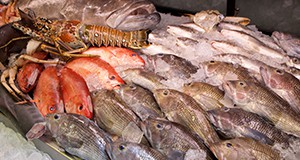
El marisco es un término general para todo tip de pescados y mariscos (USDA 2010). Los mariscos son parte del “grupo de alimentos de proteína” de MyPlate y también proporciona otros nutrientes necesarios para una buena salud (USDA 2011). Como hay muchos beneficios para la salud associados con la inclusión de los mariscos en la dieta, se recomienda que los adultos consuman al menos ocho onzas de una variedad de mariscos cada semana. Mientras que comer más mariscos se recomienda como parte de una dieta saludable, es importante tener en cuenta su presupuesto al hacer compras de mariscos. Este artículo explica los beneficios para la salud de los mariscos y ofrece algunas estrategias para ahorrar dinero para hacer los mariscos más asequible. This four page fact sheet is the Spanish language version of http://edis.ifas.ufl.edu/fs247, written by Michelle Brown and Wendy J. Dahl, and published by the Food Science and Human Nutrition Department.
http://edis.ifas.ufl.edu/fs275
Chronic Kidney Disease: Phosphorus and Your Diet

Phosphorous is an essential mineral necessary for the formation of bones and teeth, but also for kidney function and the regulation of muscle contractions, heartbeat, and nerve transmission. High blood levels of phosphorus may lead to adverse effects on bone, kidney, and heart health. When there is too much phosphorus in the blood, the body reacts by leaching calcium from the bones. This can be especially dangerous for those with Chronic Kidney Disease. This four-page fact sheet discusses the relationship between Chronic Kidney Disease and Phosphorous intake, examining foods that are high in phosphorous and ways to manage phosphorous levels. Written by Nancy J. Gal, Lauren Headrick, Kate Bennett, and Wendy J. Dahl, and published by the Food Science and Human Nutrition Department.
http://edis.ifas.ufl.edu/fs273
De compras para la salud: Comidas para una persona
 En el mundo ajetreado de hoy, muchos estadounidenses se encuentran cocinando para ellos mismos. Los adultos mayores y estudiantes universitarios por igual, se enfrentan al desafío de preparar la comida como una prioridad, cuando nadie más se encarga de ellos para crear una comida balanceada. Ya sea que usted coloque una comida en el microondas después de un día muy ocupado, o pase tiempo cocinando una comida especial para usted, comprar y preparar comidas saludables para uno mismo a bajo costo puede ser agradable, simplemente con un poco de planificación. This 5-page fact sheet is the Spanish language version of FSHN13-02/FS224: Shopping for Health: A Menu for One. It was written by Morgan Denhard and Wendy Dahl, and published by the UF Department of Food Science and Human Nutrition, February 2015. (Photo: Thinkstock.com)
En el mundo ajetreado de hoy, muchos estadounidenses se encuentran cocinando para ellos mismos. Los adultos mayores y estudiantes universitarios por igual, se enfrentan al desafío de preparar la comida como una prioridad, cuando nadie más se encarga de ellos para crear una comida balanceada. Ya sea que usted coloque una comida en el microondas después de un día muy ocupado, o pase tiempo cocinando una comida especial para usted, comprar y preparar comidas saludables para uno mismo a bajo costo puede ser agradable, simplemente con un poco de planificación. This 5-page fact sheet is the Spanish language version of FSHN13-02/FS224: Shopping for Health: A Menu for One. It was written by Morgan Denhard and Wendy Dahl, and published by the UF Department of Food Science and Human Nutrition, February 2015. (Photo: Thinkstock.com)
http://edis.ifas.ufl.edu/fs266
De compras para la salud: Las hierbas y las especias
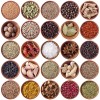 Las hierbas y las especias han sido usadas durante cientos de años en la cocina y en la medicina. Estas añaden una amplia gama de sabores a los alimentos y también pueden proporcionar beneficios para salud. Para algunas personas, el uso de hierbas y de especias en la cocina puede ser un reto—¡pero no tiene qué ser así! La siguiente información le permitirá estar en un buen camino para disfrutar de una sazón sabrosa y saludable.This 4-page fact sheet is the Spanish language version of Shopping for Health: Herbs and Spices, written by Jenna A. Norris and Wendy J. Dahl, and published by the UF Department of Food Science and Human Nutrition, January 2015.
Las hierbas y las especias han sido usadas durante cientos de años en la cocina y en la medicina. Estas añaden una amplia gama de sabores a los alimentos y también pueden proporcionar beneficios para salud. Para algunas personas, el uso de hierbas y de especias en la cocina puede ser un reto—¡pero no tiene qué ser así! La siguiente información le permitirá estar en un buen camino para disfrutar de una sazón sabrosa y saludable.This 4-page fact sheet is the Spanish language version of Shopping for Health: Herbs and Spices, written by Jenna A. Norris and Wendy J. Dahl, and published by the UF Department of Food Science and Human Nutrition, January 2015.
http://edis.ifas.ufl.edu/fs264
De compras para la salud: Las frutas
 Las frutas tienen un buen sabor y son buenas para usted. Algunas frutas son muy ricas en nutrientes. Es decir, contienen muchas vitaminas, minerales, antioxidantes y fibra que su cuerpo necesita para estar saludable. Ya sea que le gusten las frutas frescas o los jugos de fruta, las frutas congeladas o enlatadas, es importante escoger una variedad diferente cada día. Algunos consejos para ayudarle antes durante y después de ir a comprar frutas.This 4-page fact sheet is the Spanish language version of Shopping for Health: Fruit, written by Ashley R. Kendall y Wendy J. Dahl, and published by the UF Department of Food Science and Human Nutrition, January 2015.
Las frutas tienen un buen sabor y son buenas para usted. Algunas frutas son muy ricas en nutrientes. Es decir, contienen muchas vitaminas, minerales, antioxidantes y fibra que su cuerpo necesita para estar saludable. Ya sea que le gusten las frutas frescas o los jugos de fruta, las frutas congeladas o enlatadas, es importante escoger una variedad diferente cada día. Algunos consejos para ayudarle antes durante y después de ir a comprar frutas.This 4-page fact sheet is the Spanish language version of Shopping for Health: Fruit, written by Ashley R. Kendall y Wendy J. Dahl, and published by the UF Department of Food Science and Human Nutrition, January 2015.
http://edis.ifas.ufl.edu/fs263
Shopping for Health: Snack Foods
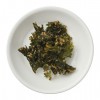 At first glance, you might think that snacking should be avoided because of the extra calories they can add to your diet. However, studies have shown there may be benefits when healthy snack choices are made. Read this 4-page fact sheet to learn about the benefits of healthy snacks and to learn healthy snack shopping tips. Includes recipes for homemade crispy kale chips and peanut butter and jelly yogurt. Written by Carley Rusch and Wendy J. Dahl, and published by the UF Department of Food Science and Human Nutrition, January 2015. (Photo: iStock/Thinkstock.com)
At first glance, you might think that snacking should be avoided because of the extra calories they can add to your diet. However, studies have shown there may be benefits when healthy snack choices are made. Read this 4-page fact sheet to learn about the benefits of healthy snacks and to learn healthy snack shopping tips. Includes recipes for homemade crispy kale chips and peanut butter and jelly yogurt. Written by Carley Rusch and Wendy J. Dahl, and published by the UF Department of Food Science and Human Nutrition, January 2015. (Photo: iStock/Thinkstock.com)
http://edis.ifas.ufl.edu/fs262
Shopping for Health: Seafood
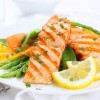 Seafood is part of the protein foods group of MyPlate and also provides other nutrients needed for good health. Because of the many health benefits, adults should consume at least eight ounces of a variety of seafood every week. Still, it is important to consider your budget when shopping for seafood. This 4-page fact sheet explains the health benefits of seafood and offers some money-saving strategies for making seafood more affordable. Written by Michelle Brown and Wendy J. Dahl, and published by the UF Department of Food Science and Human Nutrition, April 2014. (Photo: Elena Gaak/iStock/Thinkstock)
Seafood is part of the protein foods group of MyPlate and also provides other nutrients needed for good health. Because of the many health benefits, adults should consume at least eight ounces of a variety of seafood every week. Still, it is important to consider your budget when shopping for seafood. This 4-page fact sheet explains the health benefits of seafood and offers some money-saving strategies for making seafood more affordable. Written by Michelle Brown and Wendy J. Dahl, and published by the UF Department of Food Science and Human Nutrition, April 2014. (Photo: Elena Gaak/iStock/Thinkstock)
http://edis.ifas.ufl.edu/fs247
Facts about Protein
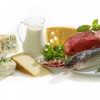 There are many sources of dietary protein. This 3-page fact sheet covers protein basics, the role of proteins in the body, recommended intake, sources of protein and how to make healthier choices. Written by Nicole C. Agro and Wendy J. Dahl, and published by the UF Department of Food Science and Human Nutrition, January 2015.
There are many sources of dietary protein. This 3-page fact sheet covers protein basics, the role of proteins in the body, recommended intake, sources of protein and how to make healthier choices. Written by Nicole C. Agro and Wendy J. Dahl, and published by the UF Department of Food Science and Human Nutrition, January 2015.
http://edis.ifas.ufl.edu/fs261
Prueba de la cuchara para alimentos en pure
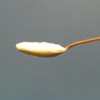 Los alimentos en puré preparados para personas con problemas al tragar deben satisfacer las guías de textura recomendadas. La textura apropiada es la prioridad cuando se crean purés. Un puré debe tener textura uniforme que es un “espesor en la cuchara” y no requiere masticar. No debe ser seco, pegajoso, grumoso o delgado. Los ajustes de espesor pueden hacerse de acuerdo a las necesidades específicas del individuo.This 1-page fact sheet is the Spanish language version of Spoon Test for Puréed Food. Written by Wendy Dahl and Jamila Frazier, and published by the UF Department of Food Science and Human Nutrition, November 2014.
Los alimentos en puré preparados para personas con problemas al tragar deben satisfacer las guías de textura recomendadas. La textura apropiada es la prioridad cuando se crean purés. Un puré debe tener textura uniforme que es un “espesor en la cuchara” y no requiere masticar. No debe ser seco, pegajoso, grumoso o delgado. Los ajustes de espesor pueden hacerse de acuerdo a las necesidades específicas del individuo.This 1-page fact sheet is the Spanish language version of Spoon Test for Puréed Food. Written by Wendy Dahl and Jamila Frazier, and published by the UF Department of Food Science and Human Nutrition, November 2014.
http://edis.ifas.ufl.edu/fs257
De compras para la salud: Alimentos con fibra anadida
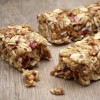 La fibra en los alimentos consiste de carbohidratos que no pueden ser digeridos. Aunque muchos alimentos naturalmente contienen fibra, hay ingredientes altos en fibra que comúnmente se añaden a los alimentos para aumentar el contenido de fibra. Los ingredientes con fibra se pueden adicionar por razones funcionales o de salud. This 3-page fact sheet is the Spanish language version of Shopping for Health: Foods with Added Fiber, written by Wendy J. Dahl, and published by the UF Department of Food Science and Human Nutrition, October 2014. (Photo: iStock/Thinkstock.com)
La fibra en los alimentos consiste de carbohidratos que no pueden ser digeridos. Aunque muchos alimentos naturalmente contienen fibra, hay ingredientes altos en fibra que comúnmente se añaden a los alimentos para aumentar el contenido de fibra. Los ingredientes con fibra se pueden adicionar por razones funcionales o de salud. This 3-page fact sheet is the Spanish language version of Shopping for Health: Foods with Added Fiber, written by Wendy J. Dahl, and published by the UF Department of Food Science and Human Nutrition, October 2014. (Photo: iStock/Thinkstock.com)
http://edis.ifas.ufl.edu/fs255
Datos sobre el fosforo
 El fósforo es un mineral que se encuentra en todas las células del cuerpo, por lo general en forma de fosfato. Es el segundo mineral más abundante en el cuerpo después del calcio. Alrededor del 85% del fósforo se almacena en los huesos y dientes. Es importante para la formación de huesos y dientes, además de la reparación de huesos.
El fósforo es un mineral que se encuentra en todas las células del cuerpo, por lo general en forma de fosfato. Es el segundo mineral más abundante en el cuerpo después del calcio. Alrededor del 85% del fósforo se almacena en los huesos y dientes. Es importante para la formación de huesos y dientes, además de la reparación de huesos.
This 3-page fact sheet was written by Nancy J. Gal y Wendy J. Dahl, and published by the UF Department of Food Science and Human Nutrition, August 2014.
http://edis.ifas.ufl.edu/fs252
Datos sobre los antioxidantes
 Nuestro cuerpo está constituido de células. Dentro de éstas ocurren constantemente reacciones químicas, que se conocen colectivamente como metabolismo. Estas reacciones son necesarias para la vida, pero algunas veces crean radicales libres. Los radicales libres son moléculas altamente reactivas que pueden iniciar reacciones dañinas en cadena en nuestras células. Esto se conoce como estrés oxidativo. Diversas investigaciones relacionan el estrés oxidativo con muchas enfermedades: artritis, enfermedades de los pulmones (como enfisema), enfermedades del corazón, enfermedad cerebro vascular, ulceras, hipertensión, Parkinson y Altzheimer, distrofia muscular y otras. El estrés oxidativo también contribuye al proceso normal de envejecimiento. This 3-page fact sheet is the Spanish language version of Facts about Antioxidants, written by Kaitlin G. Clark and Wendy J. Dahl, and published by the UF Department of Food Science and Human Nutrition, July 2014.
Nuestro cuerpo está constituido de células. Dentro de éstas ocurren constantemente reacciones químicas, que se conocen colectivamente como metabolismo. Estas reacciones son necesarias para la vida, pero algunas veces crean radicales libres. Los radicales libres son moléculas altamente reactivas que pueden iniciar reacciones dañinas en cadena en nuestras células. Esto se conoce como estrés oxidativo. Diversas investigaciones relacionan el estrés oxidativo con muchas enfermedades: artritis, enfermedades de los pulmones (como enfisema), enfermedades del corazón, enfermedad cerebro vascular, ulceras, hipertensión, Parkinson y Altzheimer, distrofia muscular y otras. El estrés oxidativo también contribuye al proceso normal de envejecimiento. This 3-page fact sheet is the Spanish language version of Facts about Antioxidants, written by Kaitlin G. Clark and Wendy J. Dahl, and published by the UF Department of Food Science and Human Nutrition, July 2014.
http://edis.ifas.ufl.edu/fs251
Datos sobre los Carbohidratos
 Los carbohidratos, grasas y proteínas son los tres nutrientes que proveen energía (calorías). Sin embargo, los carbohidratos como los almidones y azúcares son la fuente más importante y principal de energía. Durante la digestión, el almidón se rompe en azúcares (glucosa). Los carbohidratos en forma de glucosa proveen energía a las células, tejidos y órganos para llevar a cabo las actividades diarías. Alguna glucosa se almacena en el hígado y células de los músculos para usarla cuando se requiera. Los niños necesitan carbohidratos para el crecimiento y los adultos necesitan para mantener el peso. This 3-page fact sheet is the Spanish language version of Facts about Carbohydrate, written by Nancy J. Gal, Amanda L. Ford and Wendy J. Dahl, and published by the UF Department of Food Science and Human Nutrition, July 2014.
Los carbohidratos, grasas y proteínas son los tres nutrientes que proveen energía (calorías). Sin embargo, los carbohidratos como los almidones y azúcares son la fuente más importante y principal de energía. Durante la digestión, el almidón se rompe en azúcares (glucosa). Los carbohidratos en forma de glucosa proveen energía a las células, tejidos y órganos para llevar a cabo las actividades diarías. Alguna glucosa se almacena en el hígado y células de los músculos para usarla cuando se requiera. Los niños necesitan carbohidratos para el crecimiento y los adultos necesitan para mantener el peso. This 3-page fact sheet is the Spanish language version of Facts about Carbohydrate, written by Nancy J. Gal, Amanda L. Ford and Wendy J. Dahl, and published by the UF Department of Food Science and Human Nutrition, July 2014.
http://edis.ifas.ufl.edu/fs250
Datos sobre los flavonoides
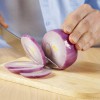 Los flavonoides son compuestos orgánicos que se encuentran naturalmente en plantas. Existen en la naturaleza más de 5 mil compuestos flavonoides, aquellos que se encuentran en las comidas caen en seis categorías: flavonoles, antocianinas, iso-flavonoides, flavan-3 oles, flavonas y flavanonas. Los compuestos en estas categorías son de interés por los beneficios potenciales sobre la salud. The English version of this document is Facts about Flavonoids. This 4-page fact sheet was written by Inbar Schapsis y Wendy J. Dahl, and published by the UF Department of Food Science and Human Nutrition, July 2014.
Los flavonoides son compuestos orgánicos que se encuentran naturalmente en plantas. Existen en la naturaleza más de 5 mil compuestos flavonoides, aquellos que se encuentran en las comidas caen en seis categorías: flavonoles, antocianinas, iso-flavonoides, flavan-3 oles, flavonas y flavanonas. Los compuestos en estas categorías son de interés por los beneficios potenciales sobre la salud. The English version of this document is Facts about Flavonoids. This 4-page fact sheet was written by Inbar Schapsis y Wendy J. Dahl, and published by the UF Department of Food Science and Human Nutrition, July 2014.
http://edis.ifas.ufl.edu/fs249
Preparacion de alimentos en pure
 Un alimento en puré es un alimento que ha sido licuado, mesclado o procesado hasta crear una textura uniforme y suave. Los ejemplos de alimentos con una consistencia en puré incluyen la salsa de manzana, relleno de tarta de calabaza y humus. Los alimentos en puré pueden ser necesarios para personas con problemas al tragar y/o masticar. Para aquellos que requieren una dieta basada de purés, es muy importante proveer una variedad de alimentos. Casi todas las comidas se pueden preparar como puré. Sin embargo, algunas comidas pueden ser más aceptadas que otras. This 4-page fact sheet was written by Wendy J. Dahl y Jamila R. Lepore, and published by the UF Department of Food Science and Human Nutrition, February 2014.
Un alimento en puré es un alimento que ha sido licuado, mesclado o procesado hasta crear una textura uniforme y suave. Los ejemplos de alimentos con una consistencia en puré incluyen la salsa de manzana, relleno de tarta de calabaza y humus. Los alimentos en puré pueden ser necesarios para personas con problemas al tragar y/o masticar. Para aquellos que requieren una dieta basada de purés, es muy importante proveer una variedad de alimentos. Casi todas las comidas se pueden preparar como puré. Sin embargo, algunas comidas pueden ser más aceptadas que otras. This 4-page fact sheet was written by Wendy J. Dahl y Jamila R. Lepore, and published by the UF Department of Food Science and Human Nutrition, February 2014.
http://edis.ifas.ufl.edu/fs246
Alimentos en pure: Los pures altos en proteina
 La proteína es un nutriente esencial que nuestro cuerpo necesita para funcionar correctamente y de manera eficiente. Cada célula, tejido y órgano del cuerpo necesita una fuente constante de proteínas para mantener una buena salud y un buen funcionamiento. Para que estos procesos metabólicos ocurran, las proteínas se descomponen para que el cuerpo las pueda usar y se reemplazan por los alimentos que comemos. This 5-page fact sheet was written by Jamila R. Lepore y Wendy J. Dahl, and published by the UF Department of Food Science and Human Nutrition, February 2014.
La proteína es un nutriente esencial que nuestro cuerpo necesita para funcionar correctamente y de manera eficiente. Cada célula, tejido y órgano del cuerpo necesita una fuente constante de proteínas para mantener una buena salud y un buen funcionamiento. Para que estos procesos metabólicos ocurran, las proteínas se descomponen para que el cuerpo las pueda usar y se reemplazan por los alimentos que comemos. This 5-page fact sheet was written by Jamila R. Lepore y Wendy J. Dahl, and published by the UF Department of Food Science and Human Nutrition, February 2014.
http://edis.ifas.ufl.edu/fs245
